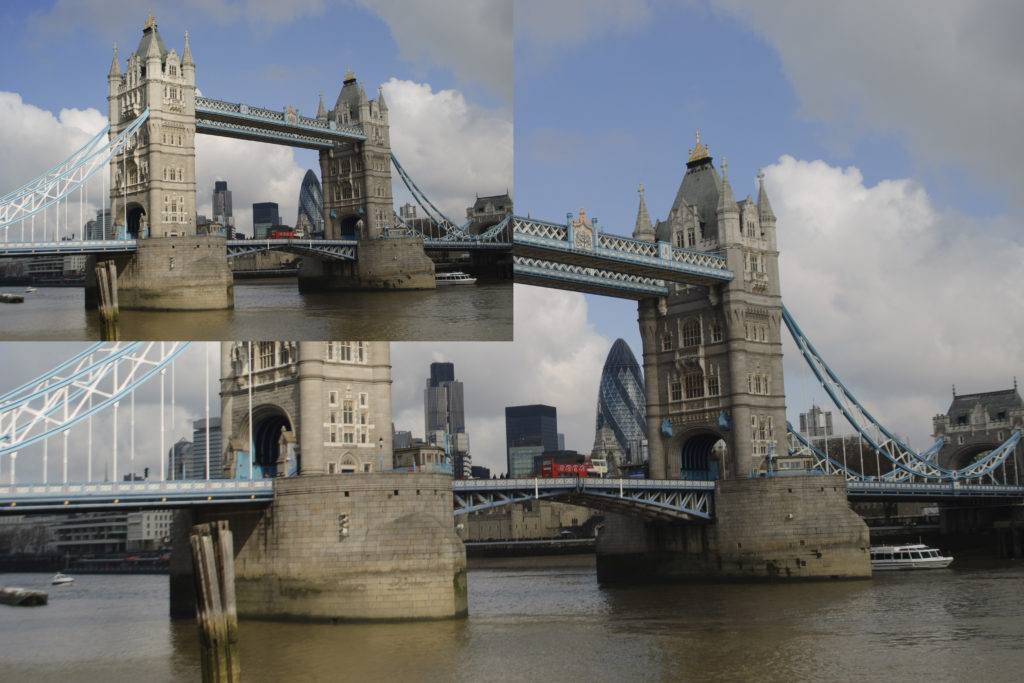Working in Photoshop can be confusing to say the least, especially if you've just bought a new dSLR or made the switch over from film to digital. While there is a huge learning curve for this program, the benefits of proper image editing are certainly worth the time investment. Below are a few of the most popular tools in Photoshop, and are ones that you should learn early on in your PS education.
Brush Tool – In photography, you‘ll find yourself using your brush tool quite often – mostly to blend layers together. The brush tool allows you to take one layer and selectively lower the opacity (transparency) of it so that the effect of that layer will diminish, allowing the original layer (the one underneath) to show through – but only on the areas that you brush over.
For example, let’s say you’ve applied a saturation adjustment layer on top of your image for a color boost. While your background looks much better, the foreground has been saturated a bit too much and looks unnatural. You would then apply a layer mask on your saturation adjustment layer (adjustment layers come with layer masks automatically anyways) and use your brush tool to paint over the area you wish to remove (the foreground) so that the original, unsaturated layer underneath begins to show through.
The best part about the brush tool is that you can adjust the transparency (opacity) of it so that you can blend the layers gradually rather than having it either 100% transparent or 100% visible. If you’re into detailed editing, your masking layer can look like a painting in itself.
When using your brush tool, also don’t forget to adjust your Hardness level: 0% will give you a very soft brush with a feathered edge (meaning the edges of your brush will gradually drop in opacity), while 100% Hardness will give you a defined brush perimeter, great for working along hard edges such as the side of a building against a blue sky.
Clone Tool – The clone tool will employ the same rules as the Brush Tool (as a lot of Photoshop tools do), where you can adjust the opacity, brush diameter, and hardness level. It’s best to work your clone tool on a duplicate layer so that you can revert back to your original if necessary, and this will also allow you to mask in the effects (as detailed above) if you decide to blend your changes with the original image.
Select a source for your Clone Tool to clone by holding down the ALT key. You’ll notice that your mouse will temporarily change to a bull’s-eye, which will allow you to pinpoint your source. Later versions of Photoshop will let you see a preview of your clone stamp before actually making the changes, which is a great benefit.
The clone tool works best when trying to blend or cover small imperfections that need a meticulous eye, but not advisable for large-scale editing across your entire image as it will probably look fake.
Spot Healing Brush Tool – The spot healing brush tool is a quick and easy way to remove, well, spots. This is used when the area you want to change is not that large and doesn’t require the precision of the clone tool, such as shadow spots from your lens or skin imperfections like acne, an unwanted mole, and so on.
This tool will automatically select a source, which makes it simple to remove spots from an area with little change in tones and color – such as a sky or a wall. However, when you work close to hard edges, this tool may not work too well. Instead, you can switch to your regular Healing Brush tool which will allow you to select a source manually by pressing the ALT key – just like the clone tool.
Selection Tool – Your selection tools will allow you to select an area of your photo and make all kinds of changes to your image. By selecting a specific area, you can:
– Duplicate your selection onto another layer
– Cut out the selection completely
– Transform and warp your selection
– …and apply virtually any editing technique in Photoshop to that selection only instead of to your entire image.
As you can imagine, the selection tool is quite versatile. You can either work in elliptical selections or rectangular, and can simply click+drag across your image to make your selection. You’ll see the marching ants (a blinking dotted line) outlining your selection which will remind you of your perimeters. To disable it, simply click CTRL+D to deselect.
You can either just do one selection, add to your selection (keep click+dragging to select more), or if you go too far – subtract from your current selection.
Once you've made your selection, you can then refine your edge (by clicking the Refine Edge button) to feather your selection so that the transition is not so drastic. If you'd rather there be no gradual transition (a hard edge to your selection), you can skip this step.
You can then add an adjustment layer to your photo and the selection will be masked automatically – meaning that the changes you make will only affect your recent selection.
If you want to change the perimeter of your selection that you just put on a layer mask, simply take your brush tool and add black or white to either add or remove your new adjustment layer. So while the selection tool is great for adjustment layers, it's also not permanent since you're working on a layer mask and can be changed at any time.
So as you can see, these are some rather versatile tools in Photoshop – and this list is certainly not exclusive as there are many other tools in your palette. However, these four are arguably the most popular since so many filters, adjustments, and other Photoshop effects depend on their proper usage.
Read more great articles by Christopher O’Donnell at his blog or follow him on Facebook. You can also enter his print giveaway contest by signing up for his newsletter.




